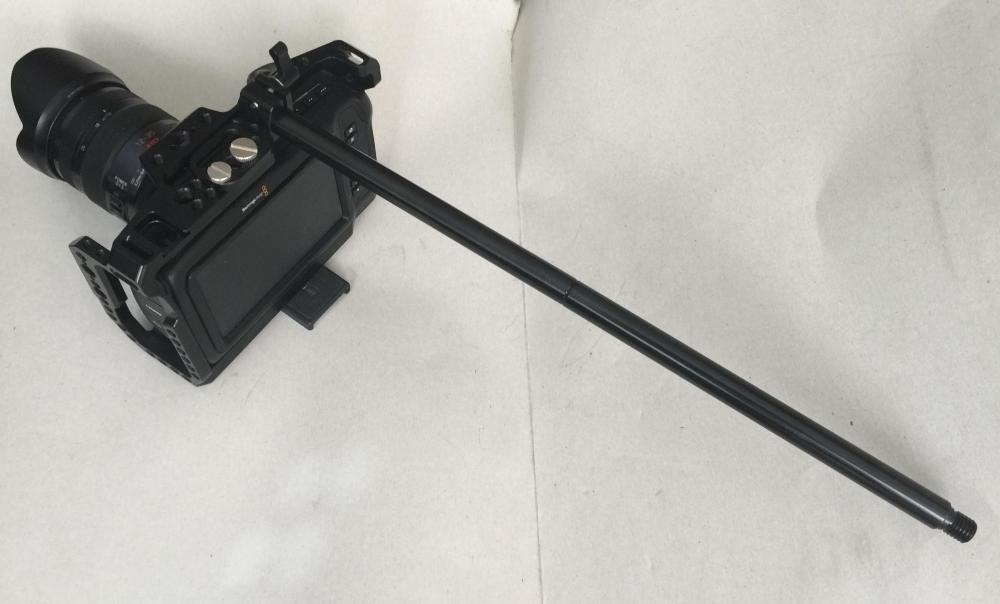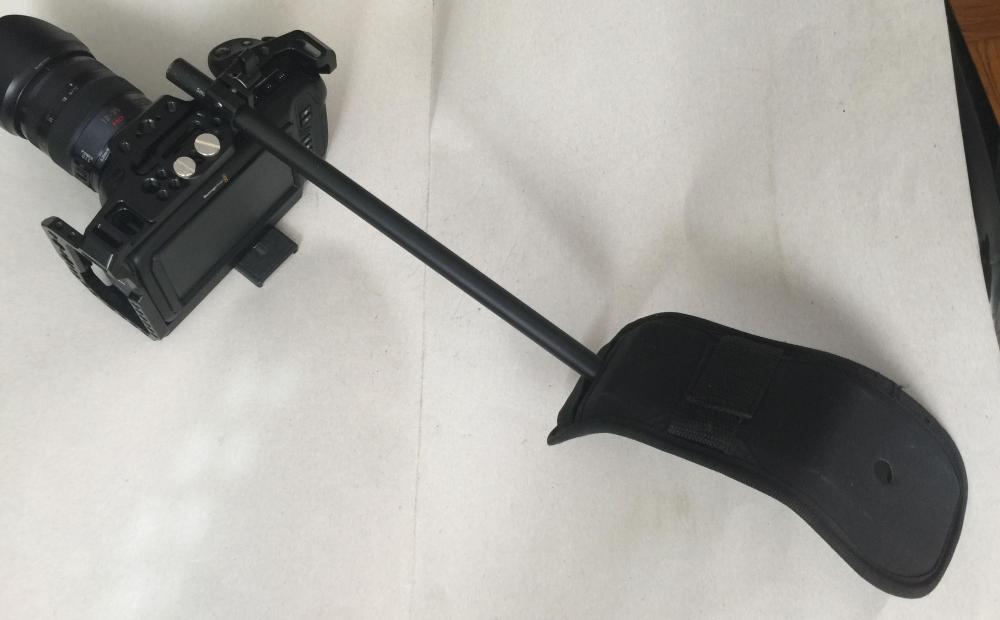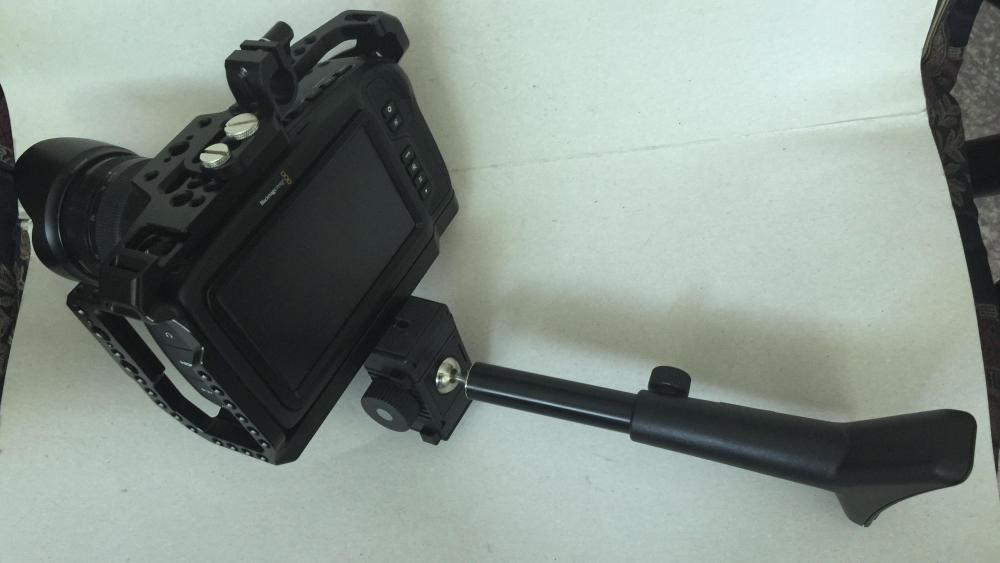-
Posts
68 -
Joined
-
Last visited
Content Type
Profiles
Forums
Articles
Everything posted by Novim
-
For my own purposes I am still with BM Pocket (2K, the 1st generation), and (when 4K is needed) the GX85, both paired with stabilized Lumix G X 14-42/3.5-5.6 or, for low light, PanaLeica Nocticron 42.5/1.2. My students use different gear, some "professional", some latest and "greatest". Personally, unless you are in film or TV industry, the gear does not much matter, as long as you have a story to tell, light to follow and angle to shoot from. The rest is good editing of motion and sound. 😊
-
Several unfinished projects I had to postpone due to the quaratine. But I took time now to made a video out of my casual stills during 2016-2020 period (and not them to be buried in some obscure and forgotten folder on my disks). So this is the result: What do you do nowadays in self-isolation? (And stay safe!)
-
A few shorted manuals for DaVinci Resolve (the full manual is 3,200 pages long): The Beginner's Guide to DR 16 (444 pages, direct download here) Advanced Editing with DaVinci Resolve 15, Introduction to Fairlight Audio Post with DaVinci Resolve 15, Color Correction with DaVinci Resolve 16, Fusion Visual Effects with DaVinci Resolve 16 - manuals on this BMD page here. In these days of auto-isolation it is not bad to volve the pages of the manuals, something we never had enough time. - Stay safe.
-
DaVinci Resolve 6.2 is out (lots of things, imo): https://www.blackmagicdesign.com/support/ What's new in DaVinci Resolve 16.2 Fairlight timeline editing toolset improvements. New mouse and keyboard based editing toolset. User adjustable per track scalable waveform display. Keyboard shortcut editing actions now include fade, cut, select and move. Support for alt/option dragging clips to create a clip copy. Support for pasting clips across timelines. Support for bouncing individual audio clips to files. Support for dragging audio clips to separate tracks using modifiers. Support for dragging audio clips to specific positions using modifiers. Support for converting multichannel tracks into linked groups. Support for a user preference to align audio edits to frame boundaries. Support for an action to trim all audio edits to frame boundaries. Fairlight sound library. Release of the Fairlight sound library installer for foley effects. Support for searching and displaying sound library description metadata. Effects and plugin management improvements. Automatic sorting of AU and VST audio effects into types and categories. Favorite audio plugins are now displayed at the top of the mixer plugin list. Additional immersive audio support. Support for MPEG-H bussing and monitoring in DaVinci Resolve Studio. Improved pan and balance including the ability to constrain panning. Track Index improvements. Support for the edit index in the Fairlight page. Drag selection of tracks, mute, solo and record controls in the track index. Drag and drop reordering of audio tracks in the track index. AAF import/export improvements. Support for importing AAF sequences as new tracks in an existing timeline. Support for importing AAF sequences with an offset to an existing timeline. Support for importing multichannel tracks from an AAF as linked groups. Support for broadcast wave files when exporting an embedded AAF. Support for exporting audio cross fades and fade handles in AAF files. Audio mixing improvements. Support for additional notch filters in clip EQ. Support for new FairlightFX Meters. Support for new FairlightFX LFE Filter. Fairlight Audio Editor improvements. Support for dedicated controls for panning up and down. Support for editing clip EQ. Support for copying and pasting clip EQ. Support for creating and applying presets for clip EQ. Support for adding, managing and custom mapping of plugin parameters. Support for changing relative clip levels. Support for resetting clip levels to unity. Support for editing fade shapes and deleting fades. Support for saving and recalling user defined track view presets. Support for enabling layered audio editing from the desktop audio editor. Support for choosing automation curves from the editor panel or console. Improved behavior when moving track selection with no tracks selected. Support for improved timecode entry and high frame rate timecode. Support for entering relative timecode values. Support for inserting 00 in timecode entry by using the colon key. Support for master spill on console faders. Support for finer adjustment of controls using the mouse or audio editor. Support for media left and media right selection keys. Support for a text-only labels mode. Support for a traditional Fairlight keyboard layout. Improved support for legacy Fairlight project import. Improved import of EQ, automation and fade from legacy Fairlight projects. Improved speed when importing large legacy Fairlight projects. Editing improvements. Improved performance when switching to large timelines with many tracks. Support for creating a compound clip from an in-out range in the timeline. Support for previewing timeline audio during live overwrites of video edits. Support for editing individual angles to the timeline from a multi-cam viewer. Support for updating clip duration display while editing in the cut page. Support for a change transition duration dialog. Support for viewing duration in frames or timecode format in the viewers. Support for Fusion transition templates in the edit page. Support for Fusion generator templates in the edit page. Support for timeline view options per system in collaborative projects. Media Pool improvements. Improved audio track metadata support with support for up to 24 tracks. Support for duplicated clips and timelines being placed in the source bin. Support for sorting media pool clips by date added. Support for showing synced audio filenames in the media pool list view. Support for revealing the media pool location of a clip from a smart bin. Support for a media pool context menu to duplicate clips and timelines. Support for only additional files when repeating media management copies. Color grading improvements. Multiple stability and usability improvements for collaborative projects. Support for smart filters based on keywords and people metadata tags. Support for modifying primary grade values using numerical values. Support for retaining out of range data when monitoring at video levels. Support for Fusion MediaOut name tooltips on the node graph inputs. Support for feet and frames data burn-in options. Support for disabling output sizing and blanking for individual clip renders. Scopes improvements. Support option for showing scopes at video level and data level. Support for HLG gamma when using HDR scopes. Support for highlighting the color viewer qualifier position in the scopes. Codec improvements. Support for Blackmagic RAW SDK 1.7. Support for rendering audio only timelines. Support for decoding 32 bit floating point audio. Improved support for color space and gamma when decoding H.265 clips. Support for displaying EXR codec name based on compression method. Support for overriding the color space and gamma tags in render settings. Support for RED SDK 7.2.1 and decoding clips from the Komodo camera. Support for two new parameters in the RED camera raw settings. Support for REDWideGamut Log3G10 IDT for ACES projects. Support for the Canon EOS-1D X Mark III camera. Support for decoding u-Law Audio in QuickTime clips. Support for alpha channel clips with the bypass re-encode option. Scripting, API and general improvements. Support for running the primary screen as a window in dual screen mode. Improved scripting API with the ability to close an open project. Improved scripting API to set frame rate for media pool clips. Support for new scripting functions to return ordered lists. Support for video monitoring advance and delay on the Fairlight page. Support for GPI/GPO control on the Fairlight Audio Interface. Multiple performance and stability improvements.
-
Perhaps it should've been named "X-T3 mark 2" since Fuji says it is a "sister camera" to T3 (with IBIS). And I don't see serious jump over my X-H1. On serious side: is it's video 10 or 8 bit, 4:2:0 or 4:2:2, internally or externally?
-
I also confirm this.
-
Beg to differ, my experience is just the reverse one. With P4K (Braw) one can do what ones wants, go in both directions ("organic" vs "digital"); not with GH5. Yellow-red shift could depend on lenses, settings, lights etc. "Run & Gun" section also depends on what one is shooting.
-
Dji Osmo Pocket is great little tool for events and video-notes around. A week ago I took it to the retrospective exhibition of Marina Abramovich, a leading conceptual performing artist, here in Belgrade's Museum of Contemporary Art (the exhibition was going around in many countries in Europe in the past 2 years). I made the video only in one shot (long 25 minutes); the lights, mixture of daily light through big museum windows and different lights inside, exhibition screens, reflectors, leds, etc., the light was impossible for shooting. Also big crowd going in all directions, on the opening day, my camera was actually in the pocket of my jacket.. This is a shot not graded, just out of the Osmo Pocket as it was taken (only speeded from time to time when the scene was unimportant), with sound also from the Osmo Pocket:
-
MOZA AirCross 2 (1Kg weight, 3.2Kg payload, the battery up to 12 hours, follow focus, two versions: Standard version with $429, and Professional kit with $499 which has three more items than standard version: Arca-Swiss Quick release Plate, Phone Holder, and iFocus-M, etc), and at 50" it seems BMPCC 4K is supported:
-
A very interesting test of Rick Lang on BM forum (here) : a comparison between Q0 and Q5. One his conclusions: "Q0 versus Q5? Of course Q0 must be better because it’s a lot higher data rate. The design goal of the ‘Q' is a quality image and how could Q5 match Q0 with so much less data? In a word: it’s Blackmagic. Sometimes some elements in either Q5 or Q0 are ‘better’ than the other; it’s not a race in which one runner is in the lead throughout the race. Q5 makes some sacrifices that you can see, but it seems to have some less understood running style and I have to admit in this video, it emerges victorious, not only in fidelity but also edge sharpness."
-
We are on the similar line of thinking, it seems to me (subtle, almost "unnoticable", more unconscious-driven repetitions of little patterns). And, after you finish, let it remain for a day or two (or more, better), and than come back and give to it the "final cut". Your task is to find a shape to a mass of clips, to arrange a chaos, and also you could use, perhaps, the school so-called "3 minutes" rule (i.e. after every 3 minutes sequence put something diffrent, or begin a new sequence). - All I say is "theoretical", of course, and just suggestions, but sometimes it helps. ? Good luck! (I also use, very often, XC10 for docos, now combined with DJI Osmo Pocket which is better than my 6+ iPhone because of stabilisation and 4K. P4K is when I want to go special. ? )
-
@kye Just a suggestion: find the clips that could be organized in repetition (like leit-motifs), it could help to the structure of the whole. Another suggestion: since in every artwork the meaningful end comes usually before the actual last element, find the end beforehand (I tend to have 2-3 endings, as a kind of a coda).
-
It reminds me of The Borgias (Showtime TV series, 2011-13, with Jeremy Irons), which was good for the first 2 seasons, but in the 3rd went down into BS, and was cancelled abruptly. ?
-
Yeah, so I plan to get eGPU this summer. ?
-
Lot of comparisons (cDNG / BRAW) here: https://forum.blackmagicdesign.com/viewtopic.php?f=2&t=91802
-
Have you first (right-click) Change Clip Speed... ad change it, and then in Inspector do Retime and Scaling > Optical Flow, and Speed Warp (all in Edit page)? My MacMini 2018 has Intel UHD Graphics 630 1536 MB, and it is also lousy GPU, not much better than yours on MBP, but it works (slowly, very slowly).
-
It's no longer there (since DR 15.2.2). But you can find Duplicata Current Timeline in the Edit page > click on timeline > Edit (in the menu). See link.
-
Another blow to GoT: link. A coffee cup left on the table.
-
Probably true. But anyway, the video (even so called documentary) could be a mixture of the real and the ilusion (in technical terms). An example: I work with 3 teams of my students - within the course on "Citizen Journalism and Video Reporting" - on some videos: topics are volunteers action (cleaning the neibourghood, helping hendicaped or older people, and similar). Students are supposed to shoot with their mobile phones, both the theme itself and to shoot them shooting the theme. Another team of students (and myself) also shoot in parallel with "pro" cameras (P4K, Canon 200C, Canon XC10). And in post, 80% of materials are from these "pro" cameras. They give us - technically and educationally - better shots. The general public on TV will see only the mobiles shooting. ?
-
It is some cheap (Hama) shoulder support. I bought it 2-3 years ago for some 10-15 euros. Now I can find only on this site (and it is 40 euros ?; it seems no longer produced so the price is way up). Retractable and easy to put into the bag, mounts in 5 seconds. Another example for shoulder support: And another one, when I want to go wild. ?
-
-
Why shoud anyone "has to accept" someone's style? I could accept that some DP is trying to have his or her "style" or "signature" (and everybode has a "signature", that is a lousy metaphor for "being creative"), but I could also see that "style" to be wrong or bad. Or, more pricisely, in this case I hardly can "see" anything, let alone a "style". Especially when he arrogantly accused viewers and their TVs for this failure. Real creators are humble and attentive both to their craft and their public. So, I wouldn't be so sure that this DP "obviously knows what he's doing" - he was a DP of an entertainment TV series broadcasted by Net, and he should be aware that - just techically, nor "artistically" - the picture quality depends on many other conditions. If he did that as a feature film for theater, then the case would be different.
-
≈ 360 min. And I was wrong before (I was looking at my CF2 128GB card). So, 4K DCI (4096x2160), BRAW Q0, 1TB ≈ 150 min. (Or ProRes 4K DCI HQ 1TB ≈ 170 min.) My apology. In theory one can make almost 2 feature movies with 1TB; in practise, for 1 feature movie 5-10 TB. (And if Kubrick resurects and starts shooting with the P4K, he would need 50 TB.)
-
4K DCI (4096x2160), BRAW Q0, 1TB ≈ 30-35 min. (Or ProRes 4K DCI HQ 1TB ≈ 30-35 min.) Start to reckon from here.
-
Ronin S: heavy (1.8 Kg); Moza Air 2: heavy (1.6 Kg); Moza AirCross: light (0.9 Kg); Moza AirCross 2: light (0.95 Kg). All work or could work with the P4K. - And my own disclamer: I rarely use gimbals, only when absolutely necessary; they are generally PITA and waste of time; I always prefer some shoulder rig, ENG style, when weight is expected and even welcome (gives more stability).








